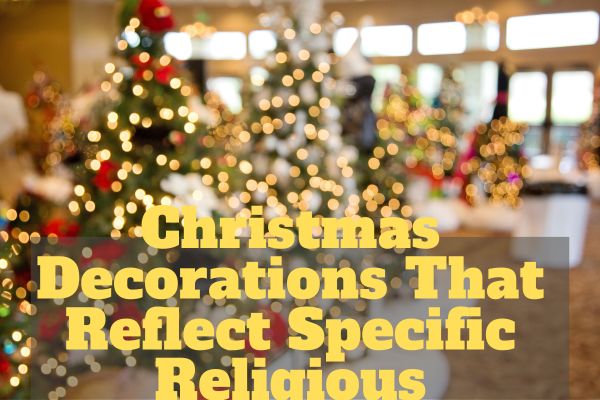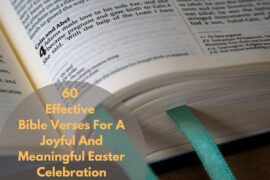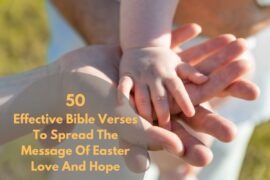The holiday season is a time of joy, unity, and celebration across diverse cultures and religious traditions. Embrace the richness of this festive period by adorning your space with Christmas Decorations That Reflect Specific Religious Traditions. In this comprehensive guide, we’ll explore a myriad of ideas to infuse your decor with cultural significance.
Contents
Christmas Decorations that Reflect Specific Religious Traditions
Certain Christmas symbols, such as stars, bells, mistletoe, Christmas trees, and more, recur throughout the holiday season.
The décor that fills our home has deep roots, even though we decorate carelessly every December. Unbelievably, every single one of those classic Christmas decorations and customs has a deeper significance, and many of the symbols connected to the season have religious roots.
Discover the meaning behind some of the most well-known Christmas decorations by reading on; you might have a greater appreciation for the season this year!
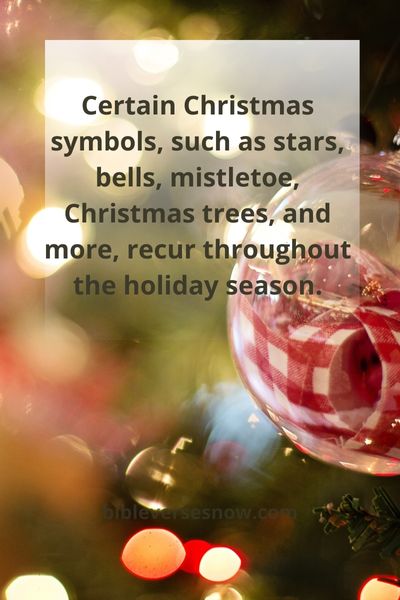
Mistletoe
Mistletoe is an aerial parasite that has no roots of its own. It lives off the tree to which it attaches itself and, without that tree, it would die. Mistletoe is a Christmas symbol of our love which derives from and exists only because God loves us. God, Who is Love, created us in love and caused us to be able to love.
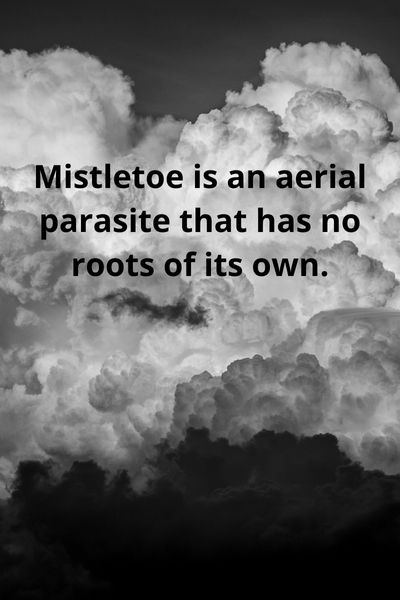
Evergreens
In cool climates, many plants are deciduous. That is, they lose their leaves in the fall, remain dead-looking all winter, and begin to sprout new growth in the spring. Evergreens are, broadly speaking, any type of plant that retains its green leaves or needles all year round. As Christian Christmas symbols, evergreens symbolize perseverance and resiliency to adversity. They remind us of Jesus’ words, “The ones who persevere to the end shall be saved.” Our faith must remain vibrant in all spiritual, economic, political, and social environments.
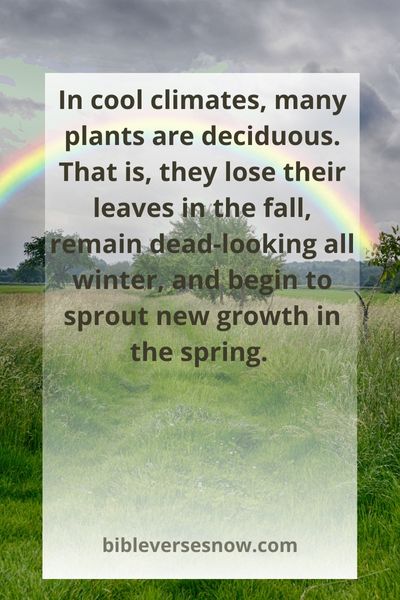
The Classic Christmas Tree
There are records of fresh greenery being used to celebrate Christmas in England in the 15th century, but it wasn’t until the 16th century that the decorated Christmas tree as we know it first appeared in Germany. The story goes that Christians would bring evergreen trees into their homes to celebrate Christmas and adorn them with candles to represent the star over Bethlehem.
This led to the popularity of Christmas tree markets in the following century, where people would purchase a tree and take it home. These trees were traditionally decorated it with apples, gingerbread, roses, and other sweets.
Thus, the Christmas tree represents the original Tree of Paradise, the burning bush that spoke to Moses, the branch of Jesse from which Jesus was born, the life-giving tree of the cross of Christ, and the tree that St. John the Apostle saw in the Book of Revelations whose leaves have medicine for the people and which yields fruit each month for the healing of the nations.
Because it is green year-round, the evergreen tree represents hope. Its needles and its narrow crest point upward, turning our thoughts to heaven. Because the tree is cut down and then erected again, it is a symbol of Christ’s resurrection.

Tinsel
Tinsels are the thin, metallic strands that are used in Christmas decorations. A legend tells of a poor, faithful family who wished to decorate a Christmas tree in honor of the Christ Child but who had no money for decorations. In the night, spiders came and spun webs across the tree. Then the Christ Child, honoring the family’s faith, turned the threads into silver.
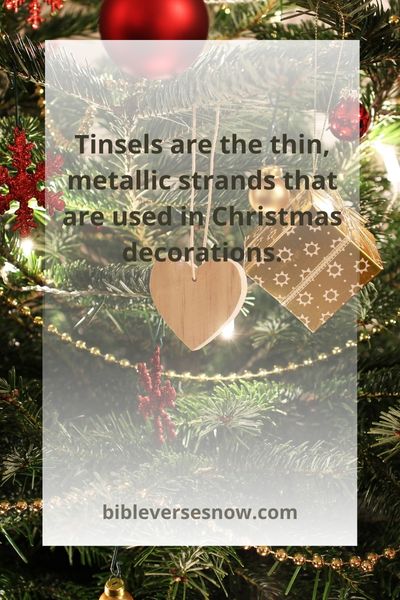
Candles and Christmas
Candles and Christmas lights represent Christ, the Light of the World. Candles and Christmas lights also remind us that we are to be light to others, to show them the way to Christ.
Bells
Bells were part of the Jewish high priest’s garb. Christmas bells not only symbolize the joy of Christmas; they also remind us that Christ is the High Priest.
Candy Cane
The candy cane is shaped like a shepherd’s crook, reminding us that Jesus, the Good Shepherd, came into our world at Christmas. The red stripe symbolizes Christ’s sacrifice and the white background His purity. Candy canes have a peppermint flavor, reminiscent of hyssop which had medicinal purposes.
The peppermint flavor reminds us that our healing came at the price of Christ’s life. The candy cane is meant to be broken and shared, just as Jesus’ Body is broken and shared at every Eucharist.
Star
Santa Claus
Santa Claus is an alteration of Saint Nicholas, the fourth Bishop of Myra (located in modern Turkey) whose feast day is December 6. Saint Nicholas was known for taking to heart Jesus’ words about almsgiving being very generous to the poor, but most often anonymously. The most famous story concerns three young women whose destitute father was going to force them into prostitution to survive.
To prevent this heinous crime, Nicholas, on three different nights, anonymously went to their father’s house and threw a bag of gold through an open window. The bishop’s miter and fur-trimmed red winter garments were corrupted into Santa’s outfit, while Saint Nicholas’s generosity was transferred to the “jolly old man” who delivers gifts anonymously on Christmas Eve.
Traditional Christmas Wreaths
Wreaths combine several Christmas symbols including holly, fruit, mistletoe, evergreens, tinsel, and so on, all of which retain their symbolism on the wreath. The word wreath comes from an old English word, meaning to writhe or twist. Greens twisted into a circle and made “crowns” for kings, military leaders, and athletes. Because wreaths, due to their circular shape, symbolize eternity, the circle of life, and endless hope, they began to be used at Christmas and hung. Because a wreath has neither a beginning nor end, but is a continuous circle, it symbolizes God Himself.
Nutcrackers
Nutcrackers are wooden dolls that were originally designed to look like toy soldiers and served both a decorative purpose as well as a practical one—to crack nuts! They were first introduced in Germany in the 17th century, but it wasn’t until the 19th century that demand grew for these Christmas decorations and they began to be mass-produced in a variety of colors, sizes, and designs.
Christmas Stockings
Christmas stockings have been hung by the chimney with care and waiting to be filled by St. Nicholas since the early 19th century. The holiday myth that goes along with this Christmas tradition is that St. Nick secretly helped a family suffering from poverty by filling their stockings with bags of gold. Following this tale, children in Europe began to hang stockings or put out winter boots for St. Nick to fill with gifts—one of which was traditionally an orange since it resembled the gold balls that supposedly landed in the first Christmas stockings.
Red and Green Christmas Decor
Red and green is a classic color combination when it comes to Christmas decor and the iconic color palette seems to have a few different origins. The first is believed to be ancient Roman times when homes were decorated with holly, an evergreen plant with red berries, during December. Similarly, ancient Celtics believed holly was a symbol of prosperity during the dead of winter. During Victorian times, the two colors were used on Christmas cards and decorations, but it wasn’t until Coca-Cola used red and green in their Christmas advertising at the beginning of the 20th century that the pairing became a true holiday staple.
Dove
Gingerbread Men
Conclusion
Elevate your holiday celebrations by infusing your space with Christmas Decorations that Reflect Specific Religious Traditions. Embrace diversity, celebrate unity, and create a festive atmosphere that resonates with the true spirit of the season.
Frequently Asked Questions
2. Can I combine decorations from different religious traditions?
Certainly! Blending decorations from various traditions can create a unique and inclusive festive atmosphere.
